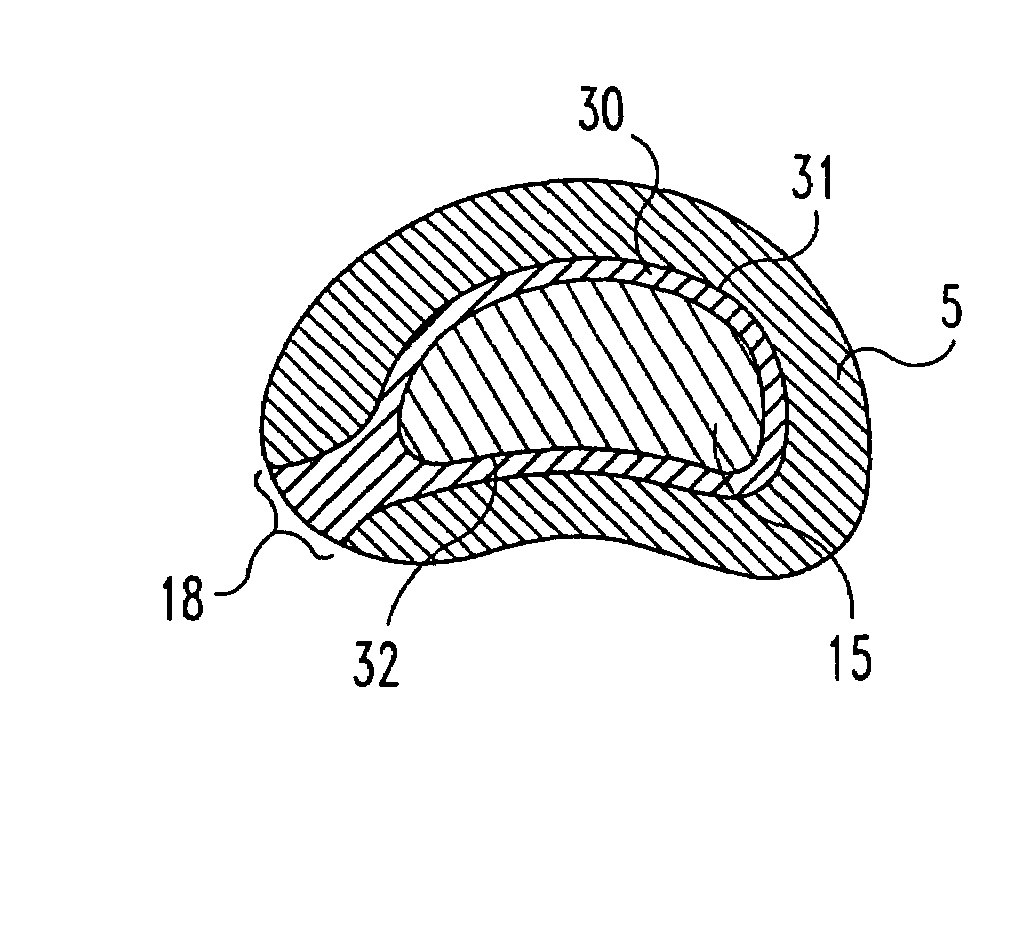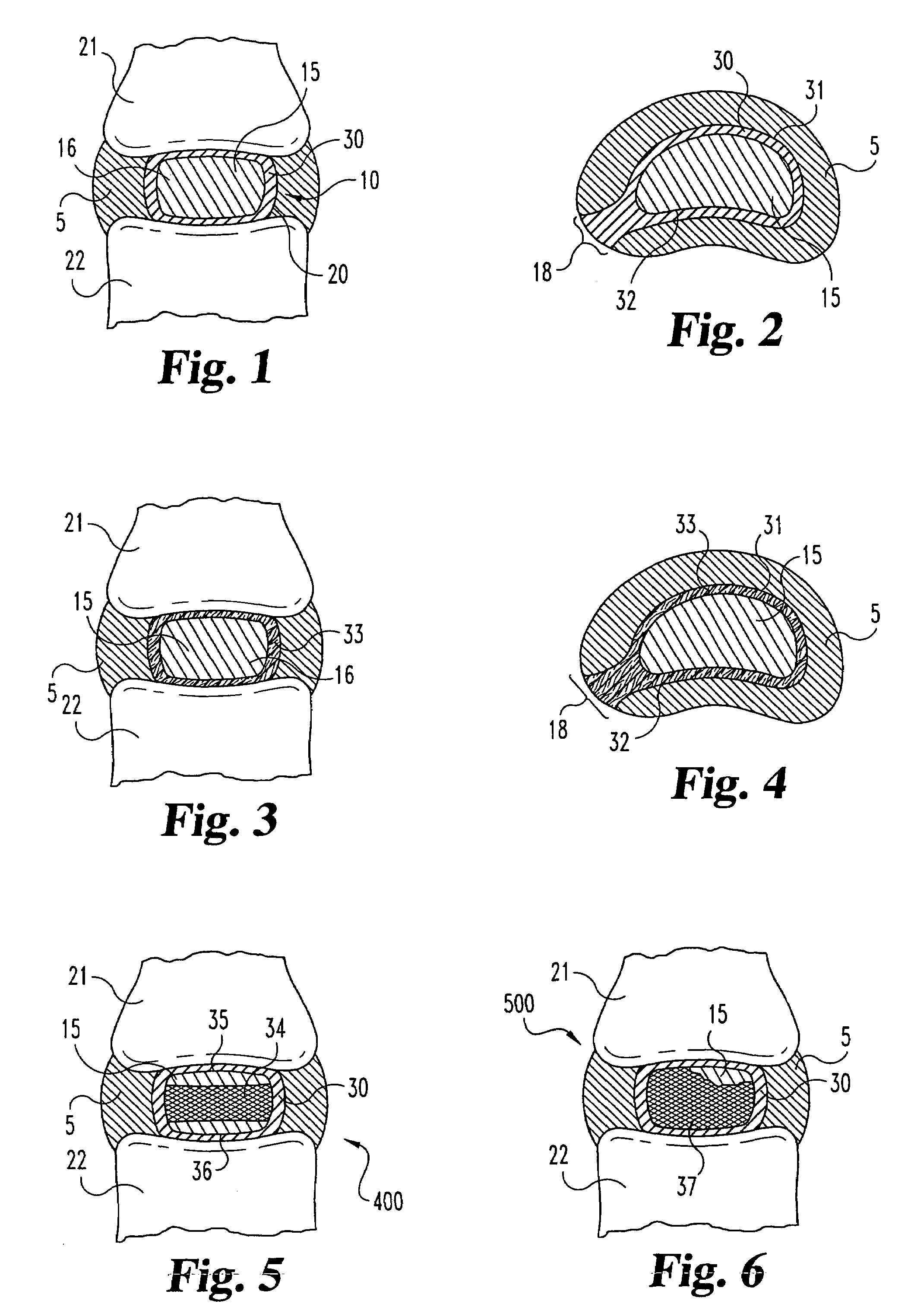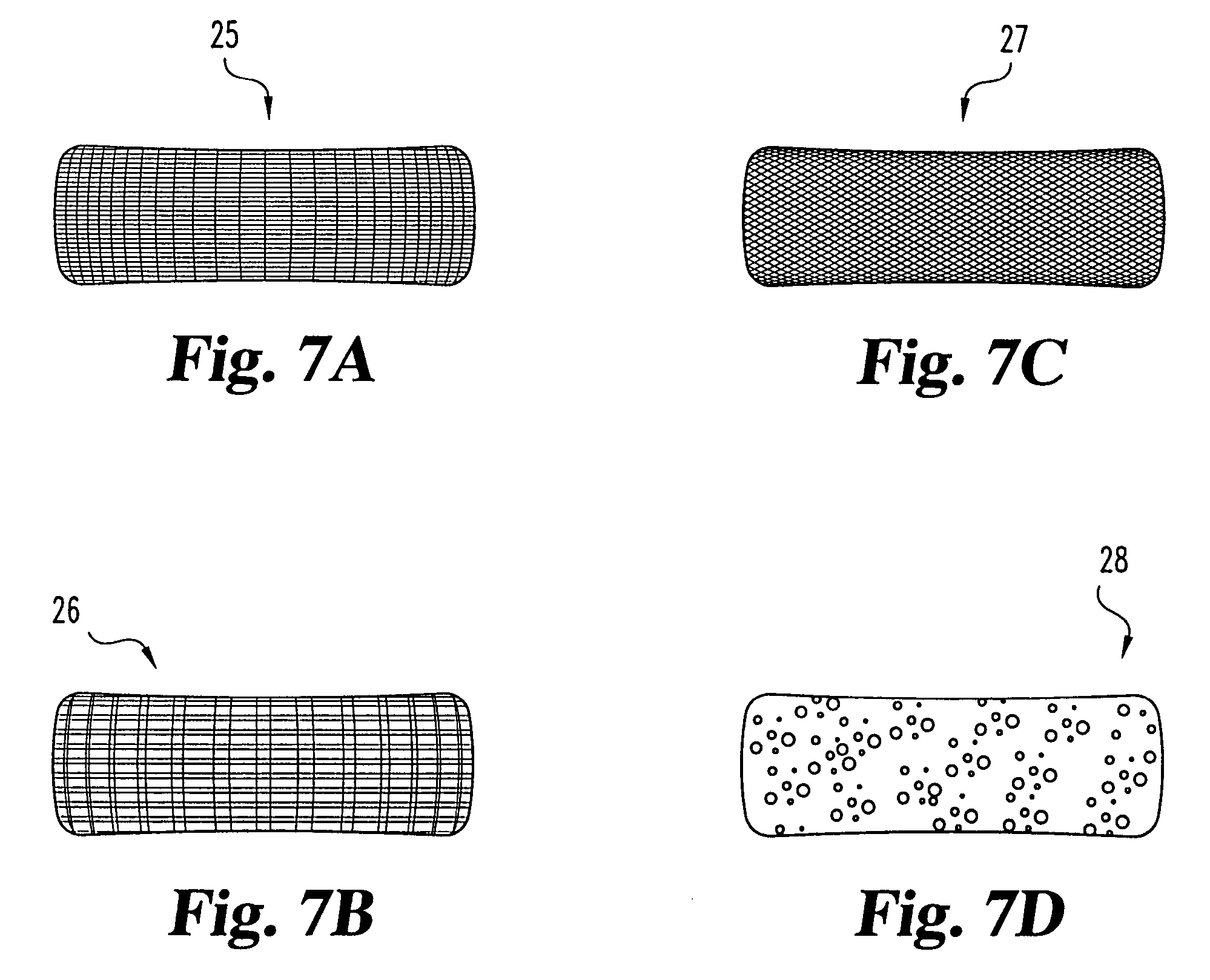Methods for forming and retaining intervertebral disc implants
a technology of intervertebral discs and implants, applied in the field of nucleus pulposus implants, can solve the problems of deterioration of intervertebral discs, pain, nerve damage, etc., and achieve the effect of strengthening bonding
- Summary
- Abstract
- Description
- Claims
- Application Information
AI Technical Summary
Benefits of technology
Problems solved by technology
Method used
Image
Examples
Embodiment Construction
[0037]For the purposes of promoting an understanding of the principles of the invention, reference will now be made to preferred embodiments and specific language will be used to describe the same. It will nevertheless be understood that no limitation of the scope of the invention is thereby intended, such alterations and further modifications of the invention, and such further applications of the principles of the invention as illustrated herein, being contemplated as would normally occur to one skilled in the art to which the invention relates.
[0038]The present invention provides prosthetic intervertebral disc nucleus pulposus implants that may fully or partially replace the natural, or native, nucleus pulposus in mammals, including humans and other animals. In one aspect of the invention, implants are provided that are configured to resist expulsion or other migration through a defect, or other opening, in the annulus fibrosis and to resist excessive migration within an intervert...
PUM
| Property | Measurement | Unit |
|---|---|---|
| force | aaaaa | aaaaa |
| force | aaaaa | aaaaa |
| force | aaaaa | aaaaa |
Abstract
Description
Claims
Application Information
 Login to View More
Login to View More - R&D
- Intellectual Property
- Life Sciences
- Materials
- Tech Scout
- Unparalleled Data Quality
- Higher Quality Content
- 60% Fewer Hallucinations
Browse by: Latest US Patents, China's latest patents, Technical Efficacy Thesaurus, Application Domain, Technology Topic, Popular Technical Reports.
© 2025 PatSnap. All rights reserved.Legal|Privacy policy|Modern Slavery Act Transparency Statement|Sitemap|About US| Contact US: help@patsnap.com



